French Vanilla Ice Cream For Any Occasion

Growing up, I ate more ice cream then I probably should have - a gallon a week to be exact. For others, ice cream may have been reserved as a treat, only eaten on special holidays or occasions such as birthdays, but why is that? As I’ve grown up, I still think ice cream is suitable any day of the week and any time of the day. For that reason, I say go to your freezer and grab a pint of ice cream and enjoy it while you finish reading this post.
Don’t have any? Well, this is the perfect place for you to get started making your own so that you always have ice cream on hand. Below I’ll cover my favorite type of ice cream and how it can easily be made and customized so you can be stocked no matter the occasion.
What is Ice Cream?
In its most basic form, ice cream is simply dairy mixed with a sweetener and a flavoring agent then frozen. All of us have probably seen the most basic way to make this, in a bag. Simply mix your ingredients and toss it in the freezer and pull it out after a few hours to enjoy. Now this works if you’re in a pinch, but it just doesn’t hit the spot for me at least when I crave ice cream.
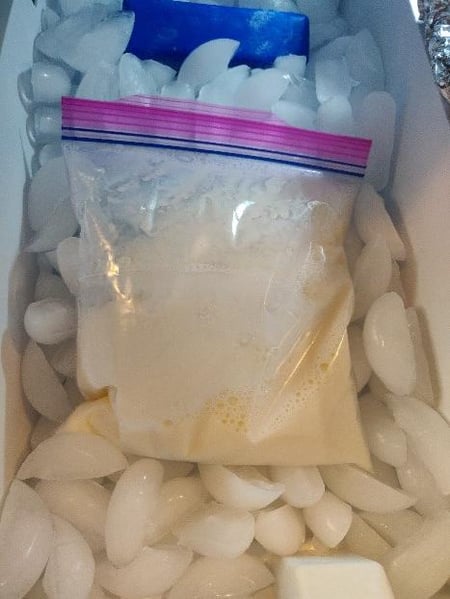 You could go a step further and use heavy cream in the base in a bag and toss it on salted ice in the freezer. Shaking it every 30 minutes will incorporate air into the mixture to give you a lighter texture. Again, this method works fine, but it is one of the more laborious ones since you need to shake it every 30 minutes for a few hours (until frozen).
You could go a step further and use heavy cream in the base in a bag and toss it on salted ice in the freezer. Shaking it every 30 minutes will incorporate air into the mixture to give you a lighter texture. Again, this method works fine, but it is one of the more laborious ones since you need to shake it every 30 minutes for a few hours (until frozen).
Next would be making what’s called a Crème Anglaise as the base for an ice cream. Crème Anglaise is a French custard made with most of the same ingredients: cream, sugar, and vanilla, but with the addition of eggs. “Eggs?” you may wonder, yes eggs! In my opinion, eggs are the key ingredient that makes or breaks a good ice cream. Making sure you have the right ratio of eggs to milk to cream can vastly change the end results of your ice cream.
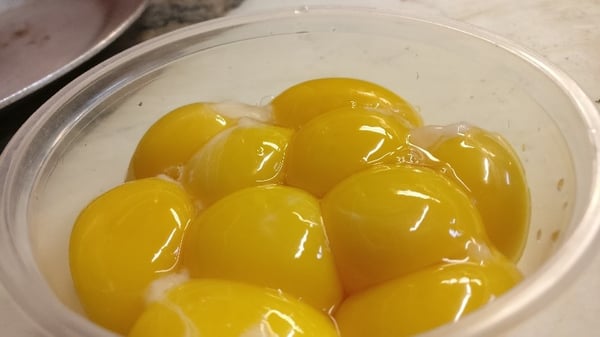
French Vanilla Ice Cream
Below is a recipe I’ve been using for an Anglaise that has never let me down. This Anglaise is a bit higher in eggs then you would normally see for ice cream. To be specific, because of the high egg yolk content. it's actually what people call a French Vanilla Ice Cream Base. Increasing the egg yolk content in the base allows for a normal ice cream base to go from “meh, alright” to “Wow!” because it bumps the richness up ten times. The super-rich texture and flavor from the eggs is why I love this recipe and use it for all my ice creams.
French Vanilla Ice Cream
|
Amount |
Ingredient |
Method of Procedure |
|
4 Cups |
Heavy Cream |
|
|
2 Cups |
Milk |
|
|
1½ Cups |
White Sugar |
|
|
2 each |
Vanilla Beans (scraped) |
|
|
10 each |
Egg Yolks (strained) |
Crème Anglaise falls under the custard category of cooking (mixture thickened with eggs via cooking) and in my opinion, can be one of the hardest things to master. It’s a balancing act of having the right temperature so that you don’t have to cook it forever, and stirring enough so you don’t make scrambled eggs.
Technique for Making the Perfect Anglaise
I assume you can guess now that the main mistake people make when making an Anglaise is scrambling the eggs as opposed to creating a velvety smooth thicken cream. These few tips will help you to not make scrambled eggs:
- Use a thick bottom pot (Le Creuset or pan with visible thick metal bottom).
- This is to allow even heating along the whole pan and avoid quick temperature changes.
- Heat on medium heat, never high, avoid low.
- High heat will heat the mixture on the bottom too fast while leaving the top cold, low heat will never cook the eggs and eventually cause the milk to break, so stay in the middle.
- Use a thermometer the first couple times and pull the pot off the burner at 170F.
- Avoid boiling at all costs, if it boils you’ve gone too far. (Water boils at 212F, FYI.)
- Use a spatula to stir.
- Whisks can incorporate too much air into the mixture and mess with the thickening capability of the eggs (not a big concern normally).
- Consistently stir the whole time the mixture is cooking.
- Get the edges and move the spatula in a “S” pattern to get the most coverage.
- Mixture will thicken first on the bottom of pan, and if it sticks then scrambled eggs will form.
- Transfer mixture to another bowl/container once you take it off the burner.
- This will prevent further cooking, reducing the chance for scrambled eggs.
- Strain the mixture (optional).
- This will remove any possible eggs that did form or stray bits in the mixture.
Tip: if you notice that scrambled eggs are just starting to form, whisk heavily and remove from burner. Sometimes this can save the mixture. Once the eggs are cooking though, you can’t go back, so you’ll need to start over.
Customizing Your Ice Cream
After cooking the Anglaise, you can flavor it. We add the flavoring at the end because heating flavoring agents can reduce the potency. I typically just whisk in my purees/sauces/flavorings right after taking off the stove. If it is something like vanilla or coffee though (which require steeping) those are fine to add at the beginning and strain out.
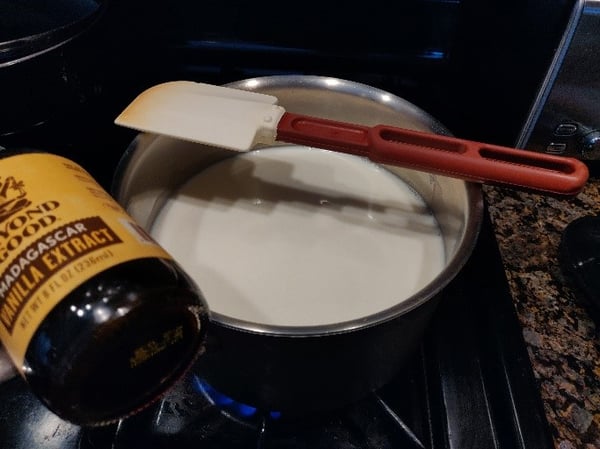
Spinning
Now that I’ve covered how to cook the Crème Anglaise, you need to chill it and then you can spin it. How you spin it is up to you, but each method will give different results. The following are the options:
- Bag Method – Least ideal, dense results, will result in large ice crystals. Or, try the no churn method.
- Ice cream churner (hand/electric) – This works great if you want to include others to take a turn churning. Medium lightness/ ice crystals.
- Electric Ice Cream mixer (with chiller) – I like this because you don’t need to freeze the base beforehand, can make ice cream after ice cream as soon as you finish your Anglaise. Light consistency/small ice crystals.
- Pacojet (high end blender with compression) – I personally use this because if my ice cream gets messed up/too hard in freezer, I can always just re-spin it. Tiniest ice crystal and smoothest texture, medium lightness.
The option you choose is more so going to be dependent on your budget and smoothness desired. As you move down the list, the tools get more expensive but allow you to achieve better results.
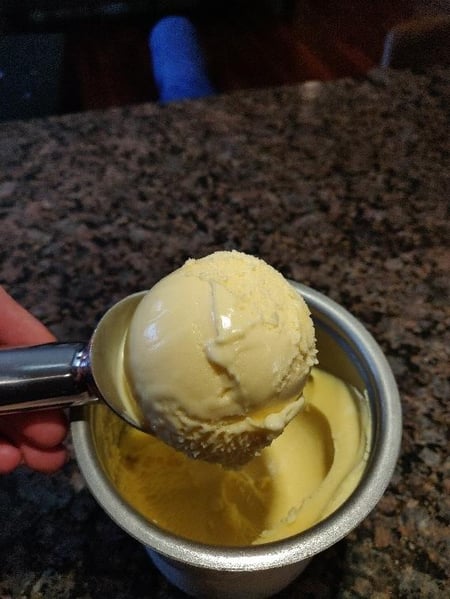
Now It’s Your Turn
Once you make it once, it becomes second nature, and you’ll be making ice cream at least once a month to fulfill your sweet tooth. Try mixing and matching flavors, and you’ll be surprised how much better your ice cream is than store-bought. Here are some of my favorite flavors as of lately:
- Strawberry Balsamic Black Pepper
- Coconut Rum
- Blackberry Gin
- Pumpkin Pie
- Classic Vanilla (always a favorite!)
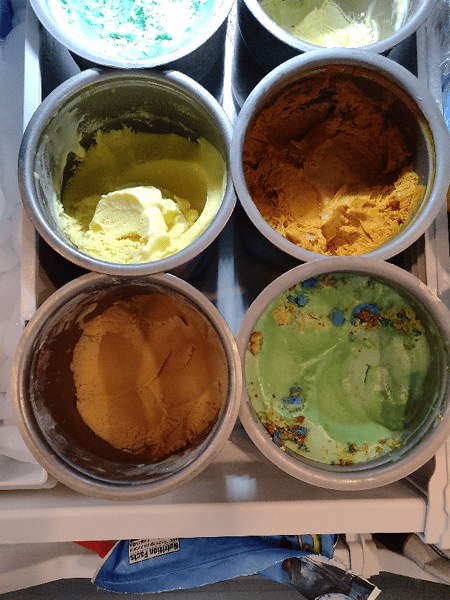
If you enjoyed learning about ice cream, check out our other classes where you can learn tons of new stuff just like ice cream. I recommend checking out the upcoming virtual workshop all about custards on Saturday, May 28, 2022 at 2pm CST. I briefly covered custards above but there is so many things you can do with them aside from just ice cream. Check out our other blog post Cream of the Crop Custards if you want to read up more about custards as well.

